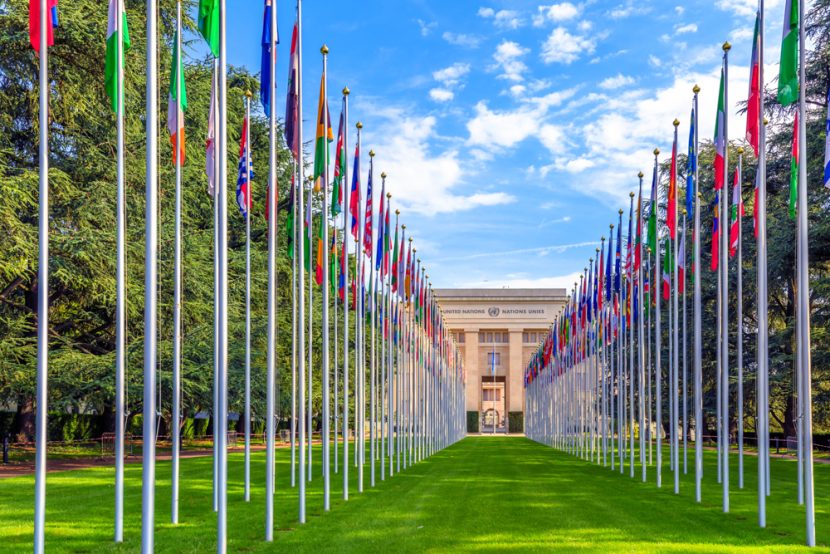
Implementing the Reform Idea: Taking Stock of States’ Efforts to Manage Their Investment Treaties

Introduction
The discussions at UNCITRAL Working Group III (WGIII) have been ongoing for 6 years. And although they are set to conclude in 2026, it remains uncertain how much time will pass before any reforms take effect and are adopted widely enough to impact the actual experiences of states currently party to investment treaties.
In the meantime, states continue to face Investor-State Dispute Settlement (ISDS) claims, exposing them to the risk of significant legal expenses and liabilities, which are a drain on limited state budgets and, as extensively discussed, can unduly and undesirably frustrate (or shift the costs of) legal and policy actions in the public interest. Indeed, since 2017, the year the UNCITRAL WGIII negotiations began and governments started devoting significant reform-related resources and attention to the process, investors have initiated 442 known treaty-based ISDS cases against states. This represents more than one-third of all known (treaty-based) ISDS cases to date. At least 29 of those claims are demanding more than USD 1 billion.
Managing Investment Treaties: Actions by Developed States
The panel began by examining the actions taken by developed states to manage their investment treaties. As Lise noted, the run-up to the start of UNCITRAL WGIII was marked by a time when it appeared that developed states were on the verge of broadening their own International Investment Agreements (IIA) commitments and exposure to ISDS claims significantly. But that expansion of ISDS to what would have genuinely become a global investment dispute settlement system did not happen due, at least in part, to public concerns regarding ISDS in the United States and Europe.
Instead of developed capital-exporting states expanding their own exposure to ISDS, what has transpired since 2017 are various bilateral and plurilateral efforts by these countries to narrow or, at the very least, avoid expanding, how much of their own inward Foreign Direct Investment (FDI) is covered by investment treaties and the ability to access ISDS. The renegotiation of NAFTA excluded ISDS between Canada and the United States. When the United Kingdom acceded to the Trans-Pacific Partnership (TPP), it excluded ISDS between the United Kingdom and Australia and New Zealand. There has also been a termination agreement by the EU, leading EU member states to exit their intra-EU BITs (in addition to arguing in disputes that consent to ISDS under those treaties is invalid). Additionally, as part of the agreement to modernize the Energy Charter Treaty (ECT), ISDS would have ceased under that treaty among all of the EU member states.
Thus, while the WGIII negotiations have unfolded, numerous developed states have been addressing their “defensive” concerns about ISDS through parallel efforts to remove or limit the role of this mechanism. This development carries two key implications for the reform efforts of other states. Firstly, it provides additional examples of agreed-upon reform strategies that either eliminate or reduce the role of ISDS in international investment law and policy. Secondly, the fact that developed states may have already achieved their “defensive” objectives might reshape their perspectives on and expectations from the UNCITRAL process, potentially influencing what other states, often on the receiving end of claims, can attain through that same process.
Actions at the National Level by Other States
The panellists then examined efforts undertaken by other states in the last roughly 15 years to address their concerns regarding investment treaties. They looked at the motivating factors behind these actions, the type of actions taken by states, and the means through which they have been implemented.
Daniel described how the staggering sums involved in ISDS claims and awards, coupled with claimants leveraging the ISDS mechanism to challenge government regulations over sensitive sectors and policy domains, have prompted reform efforts in several countries, discussing examples from Bolivia, Chile, Colombia, Ecuador, and Peru. Jaroslav also identified a trigger for—and object of—reform: the significant and enduring uncertainty regarding how tribunals interpret core substantive obligations.
The reform initiatives discussed by Daniel included states’ creation of institutional mechanisms or bodies to scrutinize IIAs and provide guidance on whether and to what extent the state should adopt or maintain those treaties, along with associated ISDS provisions. The experiences of Ecuador, which established an audit committee that evaluated its investment treaties from 2013 to 2015, demonstrate how such reviews can lead to decisions to terminate existing BITs. Additionally, states have formed in-house teams or interministerial groups to centralize control over and manage the defense of ISDS claims.
Daniel also described how, in some states, reforms have both been informed by and implemented as a result of domestic constitutional provisions, legislative enactments, and court decisions. Examples shared by him include the Ecuadorian Constitutional Court’s decision deeming ISDS inconsistent with Article 422 of the country’s Constitution; the Bolivian New Political Constitution granting the legislature authority to enact legislation limiting the role of international arbitration in
SDGs, Targets, and Indicators Relevant to the Article
1. Which SDGs are addressed or connected to the issues highlighted in the article?
- SDG 16: Peace, Justice, and Strong Institutions
- SDG 17: Partnerships for the Goals
The article discusses the ongoing discussions at UNCITRAL Working Group III (WGIII) regarding investment treaties and the need for reforms to manage the risks associated with Investor-State Dispute Settlement (ISDS) claims. These discussions are related to SDG 16, which aims to promote peaceful and inclusive societies, provide access to justice for all, and build effective, accountable, and inclusive institutions at all levels. The article also mentions the importance of multilateral fora like UNCITRAL in facilitating meaningful reform, highlighting the need for partnerships (SDG 17) to address power imbalances and diverging interests between capital-exporting and capital-importing states.
2. What specific targets under those SDGs can be identified based on the article’s content?
- Target 16.3: Promote the rule of law at the national and international levels and ensure equal access to justice for all.
- Target 17.16: Enhance the global partnership for sustainable development, complemented by multi-stakeholder partnerships that mobilize and share knowledge, expertise, technology, and financial resources.
The article emphasizes the need for effective reforms in managing investment treaties and ISDS claims to ensure equal access to justice (Target 16.3). It also highlights the role of multilateral fora like UNCITRAL in facilitating partnerships and knowledge-sharing among states to achieve sustainable development goals (Target 17.16).
3. Are there any indicators mentioned or implied in the article that can be used to measure progress towards the identified targets?
- Number of reforms implemented by states to manage their investment treaties
- Number of joint interpretive statements issued by states to clarify the meaning of contested provisions in investment treaties
- Number of bilateral or plurilateral agreements to terminate or replace existing investment treaties
- Number of ISDS cases initiated against states
The article mentions various indicators that can be used to measure progress towards the identified targets. These indicators include the number of reforms implemented by states to manage their investment treaties, the number of joint interpretive statements issued to clarify treaty provisions, the number of agreements to terminate or replace existing treaties, and the number of ISDS cases initiated against states.
Table: SDGs, Targets, and Indicators
| SDGs | Targets | Indicators |
|---|---|---|
| SDG 16: Peace, Justice, and Strong Institutions | Target 16.3: Promote the rule of law at the national and international levels and ensure equal access to justice for all. | – Number of reforms implemented by states to manage their investment treaties – Number of joint interpretive statements issued by states to clarify treaty provisions – Number of ISDS cases initiated against states |
| SDG 17: Partnerships for the Goals | Target 17.16: Enhance the global partnership for sustainable development, complemented by multi-stakeholder partnerships that mobilize and share knowledge, expertise, technology, and financial resources. | – Number of bilateral or plurilateral agreements to terminate or replace existing investment treaties – Number of reforms implemented through partnerships and knowledge-sharing |
Behold! This splendid article springs forth from the wellspring of knowledge, shaped by a wondrous proprietary AI technology that delved into a vast ocean of data, illuminating the path towards the Sustainable Development Goals. Remember that all rights are reserved by SDG Investors LLC, empowering us to champion progress together.
Source: iisd.org

Join us, as fellow seekers of change, on a transformative journey at https://sdgtalks.ai/welcome, where you can become a member and actively contribute to shaping a brighter future.






